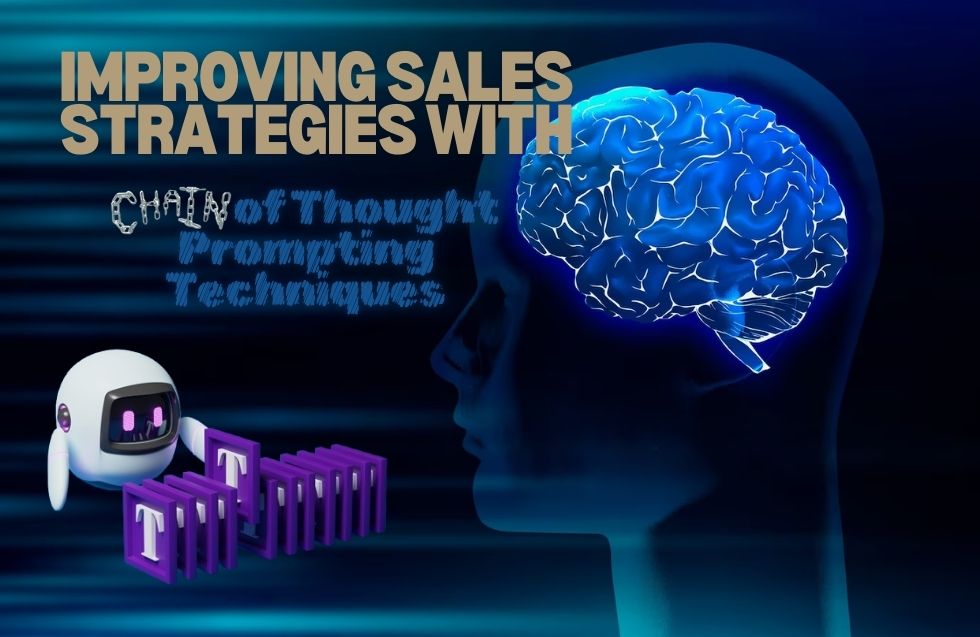In today’s competitive business landscape, successful sales strategies hinge on understanding customer behavior and decision-making processes. Chain of Thought (CoT) prompting techniques, often used in the realms of artificial intelligence and cognitive psychology, can be an effective way to boost sales by guiding prospects through their buying journey in a logical, step-by-step manner. By breaking down complex decisions into smaller, manageable pieces, you help buyers reach favorable conclusions more efficiently. Here’s how integrating Chain of Thought prompting techniques can revolutionize your sales strategies.
What is Chain of Thought Prompting?
Chain of Thought (CoT) prompting refers to a structured approach that encourages sequential thinking, guiding individuals through a series of logical steps that lead to a conclusion. Originally a technique used to improve AI decision-making, it is now gaining traction in business contexts to enhance communication, customer engagement, and sales processes.
When applied to sales, CoT prompting helps sales teams craft messages and approaches that align with the customer’s thought process, building clarity and reducing hesitation.
How Chain of Thought Prompting Enhances Sales Strategies
- Breaking Down Complex Sales into Simpler Steps
Complex sales, especially in B2B environments, often involve several decision-makers and lengthy sales cycles. Using Chain of Thought prompting, sales reps can break down the decision-making process into simpler steps, helping the customer move from one stage to the next with ease. For example, instead of pushing for a sale after an introductory call, reps can focus on guiding the client to first understand the problem, then present various solutions, before making the final pitch. - Guiding Prospects Through Their Buying Journey
Chain of Thought prompting ensures that your sales approach matches the natural cognitive flow of your prospect. By asking the right questions and providing timely information, you help prospects think critically about their needs and how your product or service can address them. For example, instead of immediately discussing product features, you could guide them with a question like: “What challenges are you currently facing in this area?” followed by solutions that naturally lead to the benefits of your offering. - Building Trust Through a Logical Sales Flow
Buyers are more likely to trust salespeople who help them think clearly and make informed decisions. CoT prompting encourages a consultative approach where the salesperson guides the prospect through the decision-making process step by step. This logical flow not only increases understanding but also builds trust, as customers appreciate when they are led to the solution rather than being pressured into it. - Overcoming Objections More Effectively
Sales objections often arise from unclear or unresolved thoughts in the buyer’s mind. With Chain of Thought prompting, sales reps can anticipate objections by asking the right questions and addressing concerns before they surface. For instance, if a buyer is hesitant about pricing, a CoT approach would involve first identifying their budget constraints and then logically explaining the long-term cost benefits of the product, guiding them to a point where price is no longer a barrier. - Enhancing Product Demos and Presentations
Product demonstrations can be overwhelming if not presented in a structured manner. By incorporating Chain of Thought prompting, you can take your prospects through each feature or benefit in a logical order that makes sense to them. Start by identifying their pain points, then gradually introduce features of your product that address those specific issues, ensuring that the prospect can follow the chain of reasoning behind why your solution is the best fit.
Implementing Chain of Thought Techniques in Your Sales Process
Here are practical ways to incorporate CoT prompting into your sales strategy:
- Use Open-Ended Questions: Begin your conversation with open-ended questions that encourage prospects to think deeply about their needs. For example, “Can you walk me through the challenges you’re facing with your current solution?”
- Guide the Narrative: Shape the conversation by steering the prospect’s attention to the critical aspects of the problem and solution. If they express concern about implementation, respond with, “Let’s explore what a seamless transition could look like for your business.”
- Logical Flow in Emails and Communication: Apply Chain of Thought prompting in your email outreach by leading with a problem statement, followed by steps that address the issue, ending with a clear call to action. This creates a structured flow that mirrors the decision-making process.
- Sales Scripts and Frameworks: Train your sales team to develop scripts that use Chain of Thought techniques, ensuring conversations progress in a natural, logical manner. Start with identifying the customer’s needs, followed by how your product provides value, and finally, move towards closing the deal.
Best Tools for Chain of Thought (CoT) Prompting Techniques
1. ChatGPT / GPT-based AI Systems (e.g., OpenAI, Jasper, ChatGPT Plugins)
Best For: Conversational AI, sales strategies interactions, customer support, thought guidance in marketing
OpenAI/ChatGPT: GPT models from OpenAI excel in generating human-like text and can easily be programmed for sequential, CoT-driven dialogues.
Jasper: A GPT-powered tool designed for marketing and sales, Jasper can use CoT prompting techniques to generate persuasive copy that leads customers through a logical buying decision process.
2. Notion AI
Best For: Structured note-taking, collaborative problem-solving, business planning
A versatile tool for creating structured sales scripts or flowcharts that guide customers through the decision-making process step by step. Use its templates to organize sales prompts.
3. Trello + AI Automation Tools (Zapier/Butler)
Best For: Managing sales pipelines, task automation, guiding team workflows
A task management tool that allows sales teams to break down complex deals into smaller steps, tracking each stage and ensuring clear progression in customer conversations.It can be enhanced by AI-powered automation tools like Butler or Zapier to integrate Chain of Thought techniques into project management or sales pipelines.
4. Miro
Best For: Visualizing thought processes, team brainstorming, collaborative decision-making
A collaborative whiteboard tool ideal for mapping out CoT workflows visually. Sales strategies teams can brainstorm and sequence steps for logical sales conversations or product demos.
5. Salesforce
Best For: Centralized Customer Insights
CRM software that integrates CoT prompting techniques by tracking customer interactions and guiding sales strategies reps to the next logical action based on data-driven insights.
6. Lucidchart
Best For: Visual Process Mapping
A diagramming tool for building flowcharts that outline CoT processes, helping visualize how prospects move from one stage to the next in a structured manner.
Key Benefits of Chain of Thought Prompting in Sales
- Improved Customer Engagement: CoT prompting keeps the conversation focused and engaging by addressing concerns and walking the buyer through a logical process, making the discussion more interactive.
- Higher Conversion Rates: When prospects are taken through a well-thought-out journey, they are more likely to feel confident in their decision to purchase, leading to higher conversion rates.
- Reduced Sales Cycle: By providing clarity and resolving objections early on, Chain of Thought prompting techniques help move prospects through the sales funnel faster.
- Enhanced Sales Team Efficiency: With structured guidance, sales teams can more effectively engage with prospects, reducing the time spent on unproductive interactions.
Conclusion
Chain of Thought prompting is a powerful technique that can revolutionize your sales strategies by aligning with the buyer’s natural decision-making process. By breaking down complex sales into manageable steps, guiding prospects logically, and addressing objections before they become barriers, your sales team can close deals more effectively while building lasting relationships with customers.
As more businesses adopt AI-inspired approaches like Chain of Thought prompting, those that can harness this method in their sales strategies process will find themselves ahead of the competition. So, next time you engage with a prospect, remember to guide their thought process — one logical step at a time.













